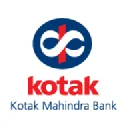Bank of Maharashtra (MAHABANK) | News Based Sentiment Analysis
TL;DR: Bank of Maharashtra News Sentiment Overview
Last Updated: Sep 28, 2025 (UTC)News based Sentiment: MIXED | Importance Score: 7
Key Insights
Latest News Analysis: Bank of Maharashtra
Last Updated: Sep 28, 2025 (UTC)Bank of Maharashtra: Upgrade & Divestment Plans
Detailed Analysis
- On September 25, 2025, S&P Global Ratings delivered a significant boost to Bank of Maharashtra, upgrading its long-term credit rating to 'BBB-' with a 'Stable' outlook and assigning a 'A-2' short-term rating. This upgrade, placing the bank three notches above Fitch's rating, is based on its strong financial health, robust capitalization, and healthy liquidity, and is expected to lower funding costs and improve access to overseas capital markets. Interestingly, despite this positive news, the bank's share price actually declined 1.47% to ₹56.34 on September 24th, the day the rating was assigned.
- The Indian government signaled its intention on September 22, 2025, to sell minority stakes in approximately half a dozen state-run companies, including Bank of Maharashtra, to boost divestment proceeds and meet the minimum public shareholding norm of 25% by August 1, 2026. This move is anticipated to improve the bank's capital adequacy and reduce the government's stake to below 75%.
- Recent technical analysis, as of September 26, 2025, presents a mixed picture. While the bank's share price closed at ₹54.01, down 2.42% from the previous close, and its market capitalization stood at ₹41,542 crore, key financial ratios remain attractive with a P/E ratio of 7.22 and a dividend yield of 2.78%. However, a weekly MACD crossover and a 50-day moving average crossover both suggest potential short-term bearishness, historically associated with average price declines of -8.33% and -5.46% respectively.
- Bank of Maharashtra adjusted its savings account interest rates, effective September 1, 2025, offering tiered rates based on balance size: 2.50% for balances up to ₹1 crore, 2.60% for ₹1 crore to ₹100 crore, and 2.75% for balances exceeding ₹100 crore. The bank also introduced the "Supreme Payroll Scheme" offering zero-balance accounts for organizations with at least 20 employees and individuals earning a minimum salary of ₹10,000.
- Earlier in the month, on September 17, 2025, Bank of Maharashtra's shares jumped 4.36% to ₹57.46 on the NSE, initiating a three-day rally for PSU banks, fueled by the government's commitment to maintain at least a 51% stake in these banks. This was followed by strong delivery-based buying on September 18, 2025, with roughly 1.5 crore shares traded.
- On September 19, 2025, an analyst issued a “strong buy” recommendation for Bank of Maharashtra with a target price of ₹70.00, representing a potential 22.25% upside from the then-current price of ₹57.59. Investor interest on INDmoney increased by 8.36% and 8% over the past 30 days.
- On September 19, 2025, an analyst issued a “strong buy” recommendation for Bank of Maharashtra with a target price of ₹70.00, representing a potential 22.25% upside from the then-current price of ₹57.59. Investor interest on INDmoney increased by 8.36% and 8% over the past 30 days.
- Despite the positive momentum, the bank's market capitalization experienced a slight decline to ₹461.78 crore ($5.24 billion) on September 22, 2025, with the share price decreasing by -0.11% to ₹57.26. The bank had previously reported a substantial 305% year-on-year increase in treasury gains during the first quarter of 2025 (as of September 20, 2025), but cautioned that these gains are expected to decrease in the second quarter due to rising 10-year yields.
The Investment Story: September was a month of contrasts for Bank of Maharashtra, marked by a credit rating upgrade and government support alongside mixed market reactions and cautious guidance regarding future treasury gains. The bank is navigating a landscape of positive fundamental developments and potential short-term headwinds.
What It Means for Investors: The S&P upgrade and government backing are significant positives, potentially lowering funding costs and attracting overseas investment. However, investors should be mindful of the anticipated decline in treasury income, the potential for short-term price declines indicated by technical signals, and the ongoing government divestment plans.
Looking Ahead: Investors should closely monitor the bank's Q2 performance, particularly its treasury gains, and track the progress of the government's stake sale. Continued observation of broader market trends and analyst revisions will also be crucial.
The Bottom Line: Bank of Maharashtra presents a compelling investment case, supported by a recent credit rating upgrade and government commitment, but requires careful monitoring of upcoming financial results, potential short-term price volatility, and the implications of the planned divestment.
Bank of Maharashtra Competitors News Sentiment Analysis
Compare news sentiment across the main stock and its key competitors based on recent market analysis.
| Company | Sentiment | Recent Headline | Importance |
|---|---|---|---|

Bank of Maharashtra Main
mahabank | nse | mixed | Bank of Maharashtra: Upgrade & Divestment Plans |
7
/10 |

HDFCBANK | NSE | mixed | HDFC Bank: Mixed Signals Amidst Profit Dip & Regulatory Scrutiny |
7
/10 |

ICICIBANK | NSE | mixed | ICICI Bank: Analyst Optimism Amidst Stock Dip |
7
/10 |

SBIN | NSE | positive | SBI: Strong Earnings & Growth Targets Drive Positive Momentum |
8
/10 |

KOTAKBANK | NSE | mixed | Kotak Mahindra: Earnings Dip Amidst Strategic Shifts |
7
/10 |

AXISBANK | NSE | positive | Axis Bank: Navigating Regulatory Changes & Market Gains |
6
/10 |
Note: Sentiment analysis is based on the most recent monthly news data. Importance scores range from 1-10, with higher scores indicating greater market relevance.
Important: News sentiment data is updated regularly and based on publicly available news sources. Sentiment scores and analysis represent algorithmic assessments of market sentiment. This information is for educational purposes only and should not be considered as investment advice. Always conduct your own research and consult with a qualified financial advisor before making investment decisions.

